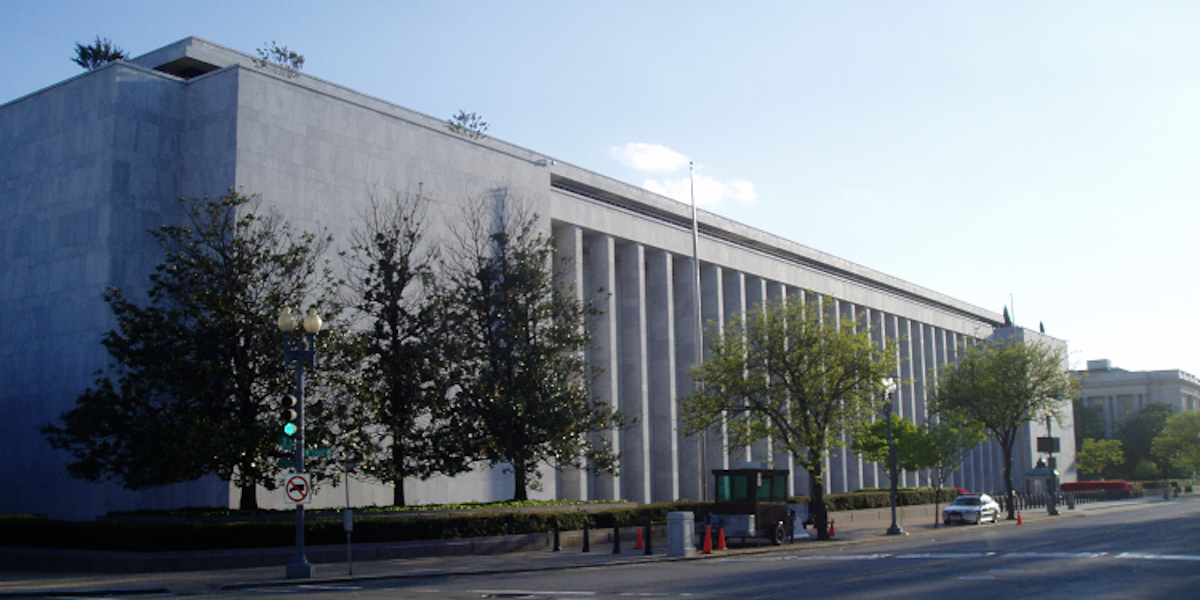
Washington, D.C.’s James Madison Memorial Building, which houses the U.S. Copyright Office.
Back in late May, songwriters demanded greater mechanical-royalty transparency from the Copyright Royalty Board (CRB). Now, music-creator organizations are once again expressing “strong opposition” to a proposed mechanical-rate freeze as well as “non-transparent elements” that could be introduced to the CRB by the National Music Publishers’ Association (NMPA) and the Big Three record labels.
The Songwriters Guild of America (and its president, Rick Carnes) and Music Creators North America (along with officer and co-chair Ashley Irwin) signed off on the initially mentioned May calls for transparency as well as new comments forwarded to the CRB. Additionally, the Society of Composers & Lyricists (for which Irwin serves as president) joined in submitting the latter remarks, which received the endorsement of the European Composers and Songwriters Alliance and the Ivors Academy, among others.
The entities’ 16-page-long message was shared with Digital Music News, and the comprehensive document promptly dives into the debut of the “compulsory mechanical rights licensing system” in 1909, the mechanical rate’s eventual increase in 1978 (under the Copyright Act of 1976), and the economic implications of the fact that said rate has remained frozen at 9.1 cents since 2006.
Notwithstanding this lengthy freeze, however, the Big Three record labels, the NMPA, and the Nashville Songwriters Association International in March of 2021 submitted a notice of settlement in principle to the CRB. This notice of settlement included a recommendation “that the royalty rates and terms presently set forth in 37 C.F.R. Part 385 Subpart B” – for physical releases, permanent downloads, ringtones, and music bundles, that is – “should be continued” at 9.1 cents through the term ending in 2027.
This recommendation, in coordination with another line in the notice of settlement – “NMPA, UMG, WMG and SME have also reached an agreement in principle concerning a separate memorandum of understanding addressing certain related issues” – “blindsided” the songwriter organizations and spurred the previously noted May open letter.
Subsequent notices reiterated the desire of the Big Three labels and the NMPA to leave the “current regulatory provisions” in place in “all material respects,” albeit without elaborating upon the “agreement in principle concerning a separate memorandum of understanding.” The three-judge CRB in late June gave concerned parties one month to comment on “whether they should adopt the proposed regulations as statutory rates” – hence the timing of the latest statements from the SGA and others.
After emphasizing the conflict of interest that comes with the overlapping ownership of the Big Three labels and leading music publishing companies – a concern identified this month by a British parliamentary committee – the organizations disclose several recommendations for the rulemaking process.
Predictably, the first of these recommendations encompasses a rejection of the settlement in principle and the frozen mechanical rate, the adoption of which “would represent a miscarriage of justice.” The CRB should likewise publish “at the earliest possible time the full text of the settlement agreement,” the text indicates, with “new royalty rates” ultimately reflecting changes in the Consumer Price Index since 2006 “at minimum.”
The fourth and final suggestion involves a U.S. Copyright Office study designed “to improve the ability of independent music creators and music publishers to more fully participate in CRB proceedings at reasonable cost.
“The current inability of all but the major music publishers and their affiliated music publisher and music creator groups to effectively participate in CRB proceedings due to the costs of such participation must be effectively addressed,” the text concludes.

